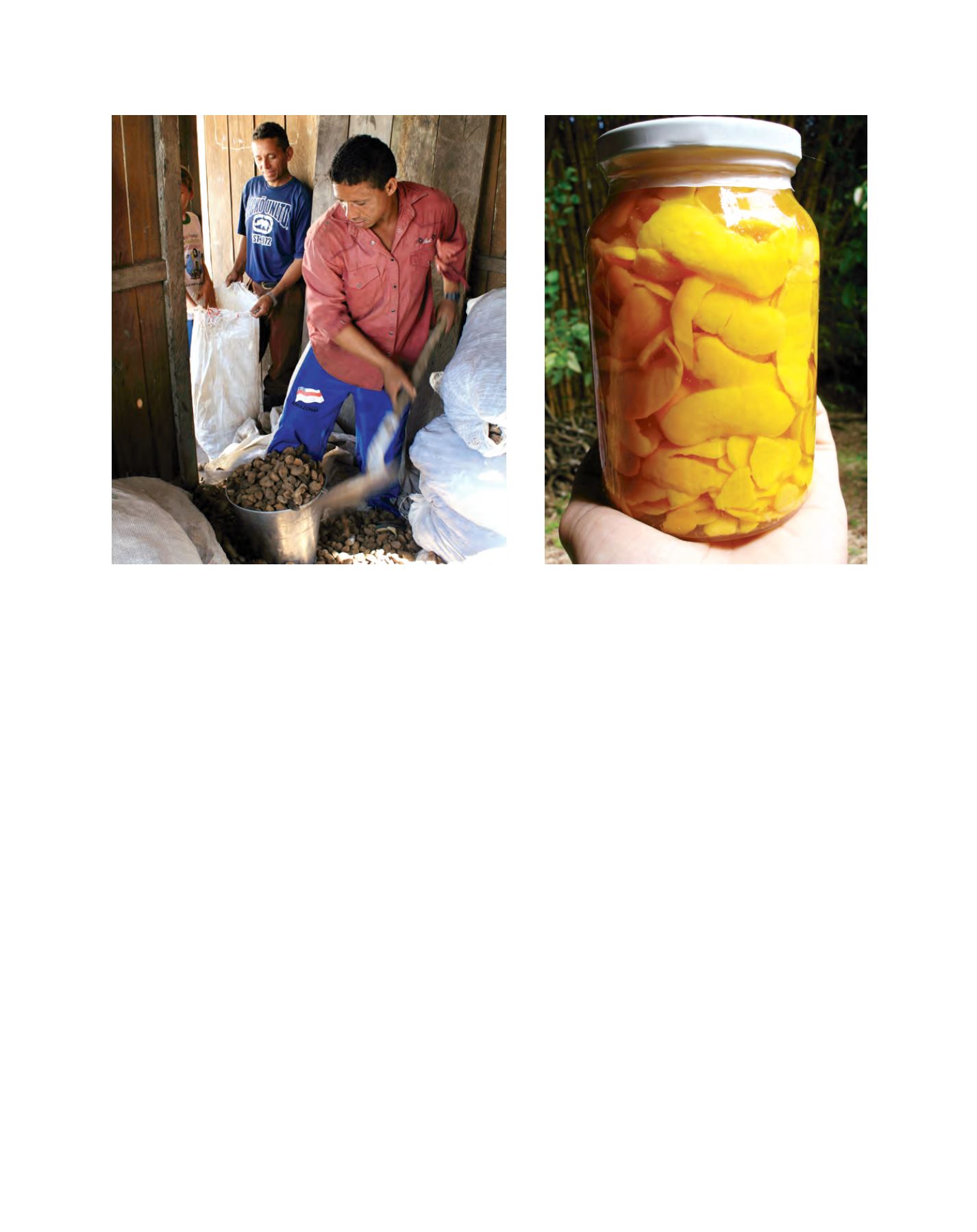

[
] 250
policy for setting a guaranteed minimum price on 10 socio-biodi-
versity products.
Bonuses are awarded to those who can sell their product at a price
below the minimum price set by the Government, so far benefiting
more than 16,000 families.
National School Feeding Program (PNAE)
Introduced in June 2009, PNAE determines that at least 30 per cent
of funds transferred by the National Fund for the Development
of Education be used for school meals, purchasing products from
family farms and rural family entrepreneurs or their organizations,
prioritizing agrarian reform settlements, indigenous traditional
communities, and
quilombola
communities. 3,800 families have
benefited through the PNAE, in partnership with the Ministry of
the Environment and the Ministry of Agrarian Development.
‘Green grant’
Established in June 2011, the Program of Support for Environmental
Conservation publicly known as ‘green grant’ (
Bolsa Verde
), rein-
forces Brazil’s commitments to the Convention on Biological
Diversity by aiming to encourage the conservation of ecosystems
and improve the living conditions and raise the income of a section
of the population living in extreme poverty.
The Federal Government transfers funds of around US$180 per
quarter (reviewed after two years) to families in extreme poverty
to develop activities which help conserve natural resources. These
measures support environmental conservation by incentivizing
families to develop conservation activities in the following areas:
national forests; federal extractive reserves; federal sustainable
development reserves; forest settlement projects; sustainable devel-
opment projects; and extractive settlement projects
instituted by the National Institute of Colonization and
Agrarian Reform – INCRA.
Family and community forest management
The year 2009 was a milestone for all community-
managed forests in Brazil, as the Federal Government
established the Federal Program of Family and
Community Forest Management. This initiative,
coordinated jointly by the Ministry of Environment
and the Ministry of Agrarian Development, is aimed
at promoting actions to develop forest management
by countryside families, agrarian reform settlers, and
traditional peoples and communities. Each year and
in accordance with the Program, the Annual Plan on
Family and Community-Based Forest Management
is published, including: actions, activities, goals,
areas, responsible bodies and foreseen resources
for the year. The plan proposes different types of
actions: organizational strengthening; institutional
strengthening; land regularization and territorial
organization; credit, fostering and incentives; techni-
cal assistance and rural extension; capacity-building
in forestry activities; research, education, develop-
ment and innovation; infrastructure; production,
processing and trading; regulatory frameworks; and
forest information systems. The first Annual Plan on
Family and Community-Based Forest Management,
the PAMFC 2010, involved seven Amazon states and
approximately 17,000 families. The second, PAMFC
Brazilian nut (
Bertholletia excelsa
) community processing
Pequi pulp (
Caryocar brasiliense
)
Image: Anréa Oncala
Image: Fernando Tatagiba
















